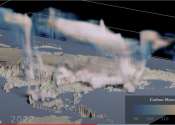Airborne observations of Asian monsoon sees ozone-depleting substances lofting into the stratosphere
Powerful monsoon winds, strengthened by a warming climate, are lofting unexpectedly large quantities of ozone-depleting substances high into the atmosphere over East Asia, new research shows.









